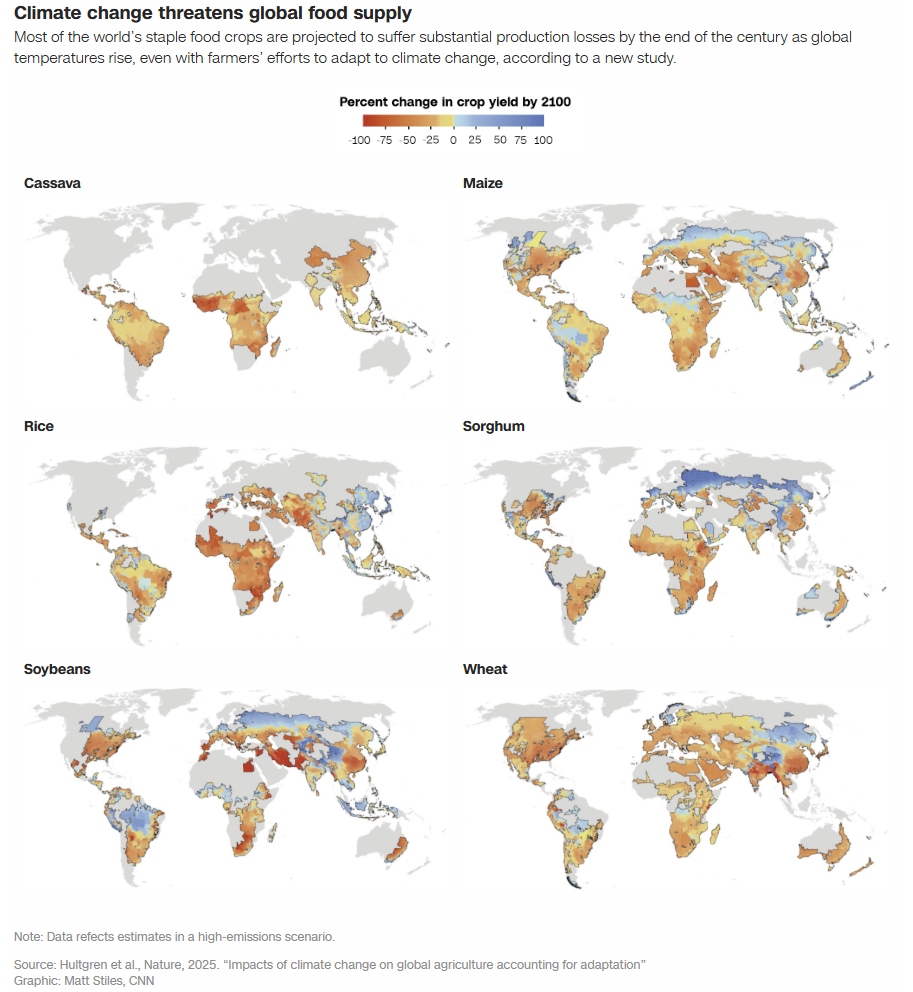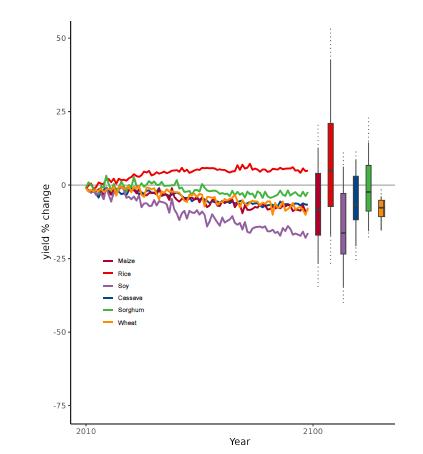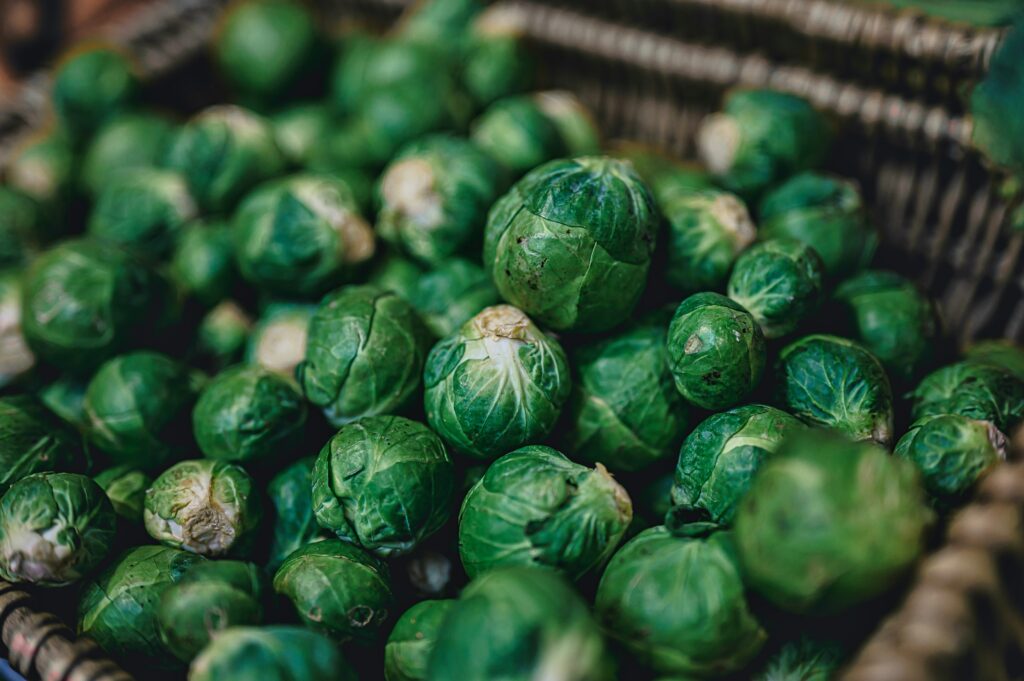Back in June we were treated to lurid headlines in CNN announcing that climate change would cut world crop production dramatically, including by as much as 50% in the US. “Rising global temperatures are set to devastate food crops across the world,” they shrieked, “with particularly alarming impacts projected for the United States, where production of key crops could plummet 50% by the end of the century, according to a sweeping new analysis.” If the world warms by 3 degrees the impact would be “basically like everyone on the planet giving up breakfast” claimed one of the study’s authors. And there were colorful maps and everything, showing the world becoming a barren desert where nothing would grow. (Not that warming since the 19th century appears thus far to have starved North Americans.) The study, by a long list of authors led by Andrew Hultgren of the University of Illinois, was published in Nature magazine. Which usually leads us to assume it was silly and alarmist. A quick inspection confirmed our suspicion.
CNN showed a set of maps illustrating the hell that awaits us, which they got from the Hultgren paper:

Yikes, it looks like reductions in crop yields drop around the world. But what’s this? The tiny print in the bottom left corner says: “Note: Data refects estimates in a high-emissions scenario.” (And yes, they spelled it “refects”, filling us with confidence as to their attention to detail.) Well well, a high emissions scenario. Could it be our old enemy RCP8.5? The one that’s as widely scorned for its absurdity as it is relied on by alarmists for its… absurdity? Oh yeah.
But wait, it gets worse. Not only did they use an emissions scenario long known to be exaggerated to the point of impossibility, they ignored the effect of increasing CO2 on plant growth. As CDN viewers know, rising CO2 levels are greening the Earth and boosting crop productivity even in hot regions. But the supercharged warming in RCP8.5 happens because a lot of CO2 goes into the atmosphere where plants can get at it. Despite which, in the model runs that generated the above figure, and the panic on CNN, they somehow invented a future in which all the warming happens but CO2 doesn’t change. It’s not possible, it’s not logical, and it’s not science. It’s propaganda.
And another thing. If you dig further into the paper you actually will find another set of results showing RCP8.5 emissions and crop changes including the estimated effect of the extra CO2. Not surprisingly, the losses are much smaller and mostly statistically insignificant. And the authors also show results from running the mid-range RCP4.5 emission scenario, but once again they accidentally on purpose left out the CO2 fertilization. Even so, the losses get even smaller. But surely, you would naturally ask, they must have shown results using RCP4.5 including the effects of CO2 emissions growth?
Er, no. Not in the paper. Instead they buried them in a 95 page Supplement posted on the Nature website, all the way down on page 72. Here is what that diagram shows:

The crop labels are very small so you might need to squint. But the squiggly coloured lines show total yield changes caused by climate change over the 21st century and the associated coloured bars show the change as of 2100 with uncertainty ranges represented by the length of the thin lines.
Even without squinting you can see that for most crops instead of total collapse they project a few percent decline, subject to so much uncertainty the results are statistically insignificant. The biggest loser in this study is soy, shown in purple, although for it too the effect is too uncertain to be statistically significant. The only crop exhibiting a statistically significant output decline (although still very small) is wheat, the little orange box on the right. But here we would argue the statistical hocus pocus in the Hultgren study likely missed the ways that wheat will benefit from additional CO2. And we support that claim with the many stories we have reported on regarding climate change and wheat.
The bottom line is that the figure above is decidedly non-alarming. It’s basically a nothing veggie burger. But the authors hid it in the back of the fridge and instead served a heaping bowl of alarmist hogwash to the credulous media. And why would they do that?
One of the authors gave away the game to CNN, saying he hoped it “will provide more evidence for the urgent need to transform the energy system and the high costs of failing to doing so.” So the aim is not to provide evidence about the effects of climate change, it’s to furnish arguments for politicians pushing a green agenda.
And they wonder why no one believes them anymore, and treat “experts say” as their cue to snort derisively.



They apparently also ignored the fact that farmers assess, yearly, which crops are going to produce the most profits, i.e. yields. Did they entertain the possibility that e.g. soy production would move further north, rather than just ‘collapsing’?
Friends of Science recently had rancher & researcher Dr. Joseph Fournier talk about the CO2 & NH3 emissions from farming & ranching & nature's emissions from bogs & wetlands. He talked about the improvements & benefits of modern agriculture since the 1930s. He concluded that Net Zero will threaten to undo humanity's hard won progress.